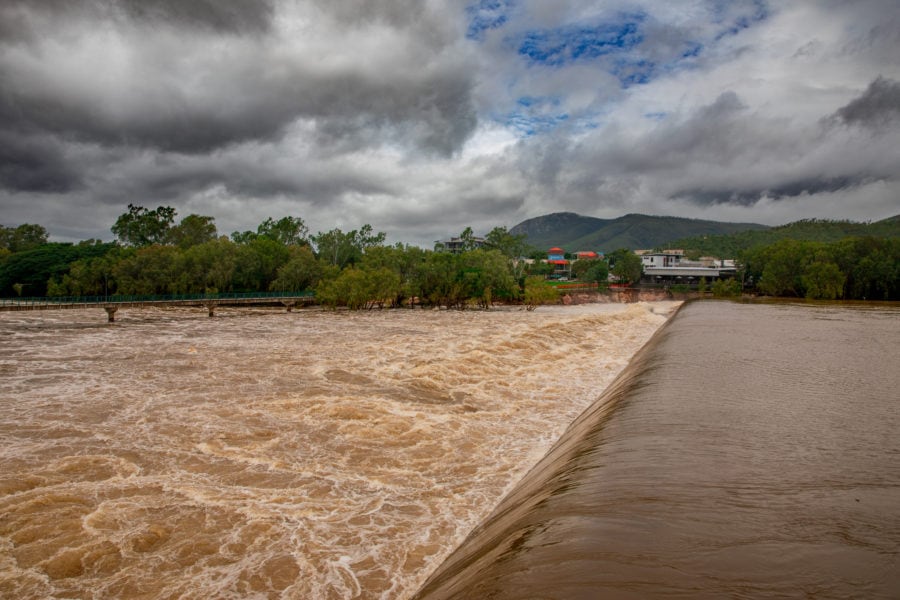Aussie weather records tumble

Australia’s mean temperature in 2019 was 1.52 °C above average, making it the warmest on record since consistent records began in 1910.
Meanwhile the national average rainfall total in 2019 was 277mm, the lowest since consistent national records began in 1900.
The Bureau’s head of climate monitoring Dr Karl Braganza said the record warm and dry year was one of the key factors influencing recent and current fire conditions in large parts of the country.
“January 2019 was the warmest month Australia has ever recorded, while just a few weeks ago in December, we saw the Australia-wide record hottest daily average maximum temperature broken multiple days in a row.” said Dr Braganza. “At the same time, rainfall deficiencies across large parts of eastern Australia have continued to increase, unfortunately exacerbating both drought conditions and the current bushfires.”
Dr Braganza said there were multiple factors influencing Australia’s weather patterns in 2019 including a very strong positive Indian Ocean Dipole, which acted to both warm and dry Australia’s landscape, particularly from around the middle of the year and the influence of a rare Sudden Stratospheric Warming event high above the south pole, which acted to push our weather systems northward and compound the warmer and drier than average conditions over southern Queensland and NSW during spring, amplifying the fire weather.
“The other key factor at play is that Australia’s climate has warmed by more than a degree since 1910, which means very warm years like 2019 are now more likely to occur, while the trend in recent decades has been for drier winter and spring seasons in the south.”
“It’s important the community remains vigilant to the risk of more heat and fire days this summer, particularly given how dry the country has been over the past 12 months.”
FAST FACTS
NEW SOUTH WALES
- Warmest and driest year for New South Wales as a whole.
- Mean temperature 1.95 °C above average, exceeding the previous record from 2018 by almost 0.3 °C.
- Sydney’s mean maximum temperature the warmest on record.
- Total rainfall below average in Sydney, despite a wet March, June and September.
ACT
- Rainfall well below average, particularly in winter and spring.
- Canberra Airport’s driest year since 1982.
- Annual mean maximum temperature at Canberra Airport the warmest on record, with every month above average.
VICTORIA
- Victoria’s fifth-warmest year on record overall, with the State’s mean temperature 1.05 °C above average.
- Victoria’s tenth-driest year on record, with rainfall below average for most of the State, and very much below average in the north and over Gippsland.
- Melbourne’s mean temperature above average.
- One of the driest years on record for central Melbourne.

QUEENSLAND
- Sixth-warmest year on record for Queensland as a whole, with the mean temperature 1.27 °C above average.
- Persistently dry in southeast Queensland, with many sites having their driest year on record.
- Flooding across northern Queensland and the Gulf Country in January and early February.
- Brisbane’s mean temperature and mean maximum temperature both warmest on record.
- Brisbane’s total annual rainfall well below average.
WESTERN AUSTRALIA
- Warmest and second-driest year on record for Western Australia as a whole.
- Severe tropical cyclone Veronica in March brought significant rainfall along the Pilbara coast and adjacent inland.
- Perth Metro’s mean maximum temperature equalled the record highs of 2011 and 2012, but nights were close to average.
- Perth Metro’s third-driest year on record.
SOUTH AUSTRALIA
- Driest and second-warmest year on record for South Australia as a whole.
- South Australia’s mean temperature was 1.45 °C above average.
- Adelaide had its hottest day on record on 24 January, and every month apart from August had a mean maximum temperature above average.
- Rainfall in Adelaide was well below average, including a record dry January to April.
TASMANIA
- Tasmania’s overall mean temperature was 0.41 °C above average, not as warm as recent years.
- Rainfall below average for most of the State, but above average in the west.
- Hobart’s mean maximum temperature highest on record, with overnight temperatures a little above average.
- Hobart had its second-driest year on record, with only 2006 drier.
NORTHERN TERRITORY
- Second-warmest year on record for the Northern Territory as a whole.
- Rainfall well below average for most of the Northern Territory away from the Queensland border.
- Darwin’s second-driest year or record.
- Darwin’s mean maximum temperature second-highest on record, but overnight temperatures close to average following many cool nights during the dry season.

